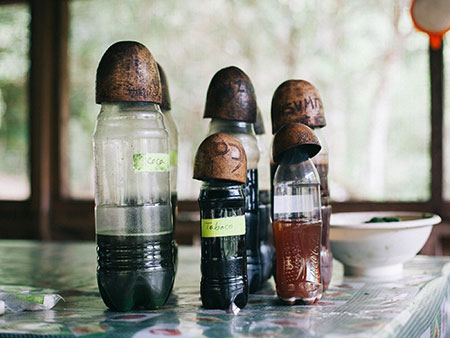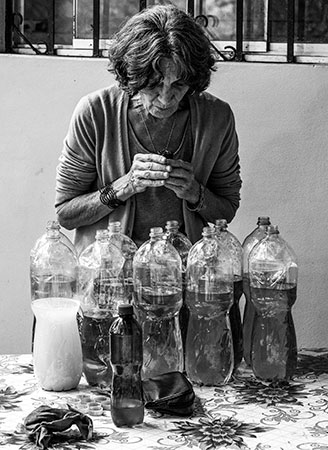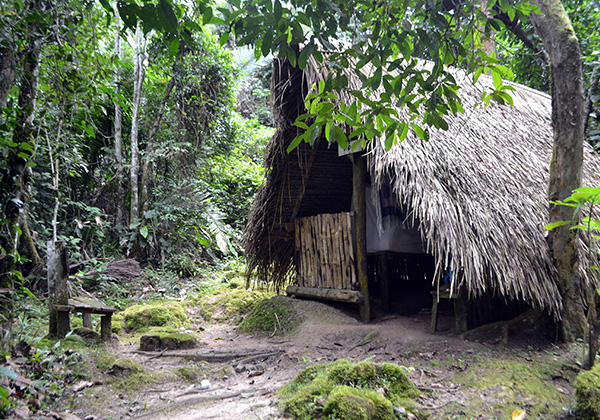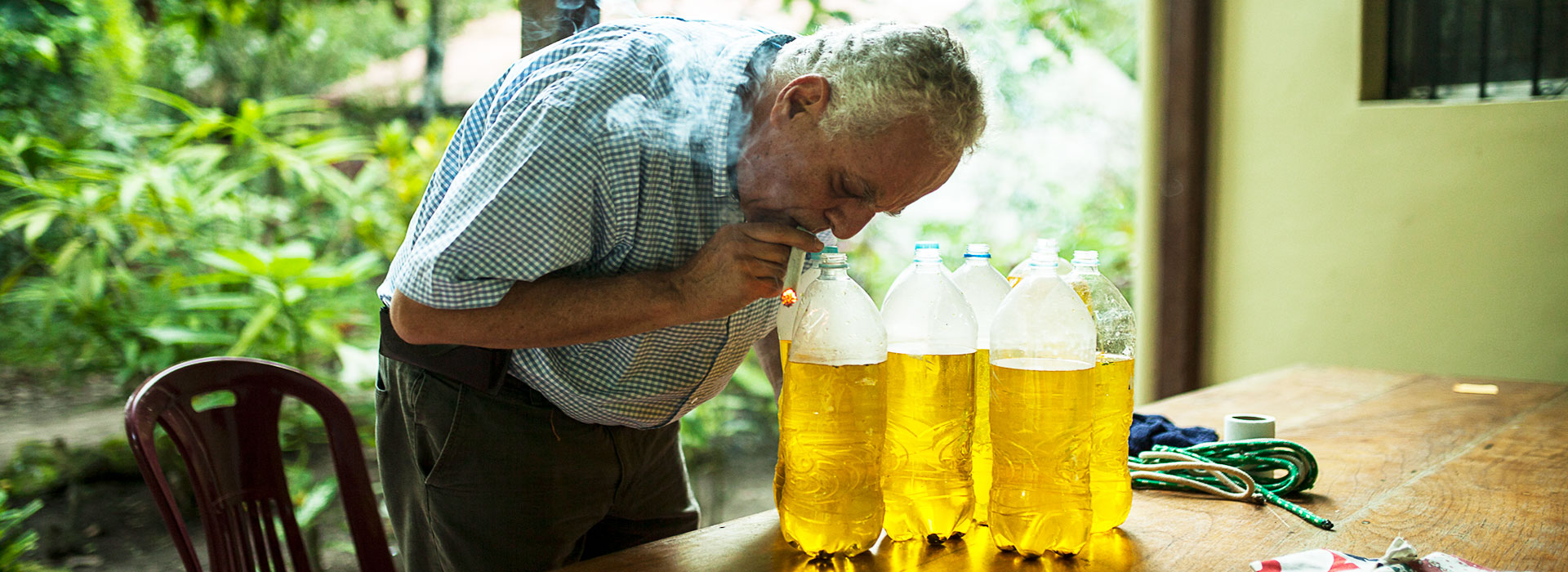I. Introduction: What are containment plants and what are they for?
It is important to understand what the term “containment” means. In its definition, it refers to “enclosing or harboring within oneself or repressing something; having a thing in itself or within it”, for example: “the riverbed overflowed with the heavy rains, but it was managed to be contained with the help of everyone.” It also refers to the repression of human passions or feelings; a colloquial example: “I wanted to tell him the truth about him, but I contained myself (held back).” In psychotherapy, it is used to refer to “a process where there are situations of tranquility and stimulation of confidence in someone who is affected by a strong emotional crisis.” Containment is a condition and situation that allows us to elaborate and develop the capacities to identify our own impulses, emotions and feelings, and allows us to contrast them with our environment and immediate experiences, being a reflective and conscious process. The situation of containment allows us to put in order and organize emotions, feelings and thoughts to express them in an assertive, coherent and purposeful way; it allows to assimilate, accommodate and integrate a new, shocking, stressful, painful situation.
In this process of containment, the presence of an Other (not necessarily a psychotherapist provides containment, but also someone who has a listening attitude, for example: the friend who listens when one feels bad, and after speaking - and without a word of reply - you feel better), is important in the development of our own limits, and the learning that allows the ordering and organization of the inner world.
Within the addiction treatment process at the Takiwasi Center, use of plant through intake is common, especially the intake of “Master Plants” in “containment mode” (different from their use in the diet-retreat approach), which allow us to accompany, help and teach patients and users in their psychological processes and therapeutic reflection. Mabit (2001) and Torres (1998) mention that within Traditional Amazonian Medicine:
“[…] The plants "teach" the patient by stimulating the dream function; the emergence of insights, flashes with powerful emotional overtones; the facilitation and acceleration of mental processes such as associative, mnesic, and cognitive processes. In general terms, a greater connection is generated between mind and emotions that allows the subject to focus better," and that "due to their entheogenic properties, they also serve to give us an introspective vision about ourselves, and about life in general.”
Under these premises, the use and intake of Master Plants in containment mode at the Takiwasi Center allows the user to have a collateral process to their psychotherapeutic accompaniment, by taking the Master Plants that are closest to what they need to know or need to learn to develop themselves at a psychosomatic, affective, emotional, spiritual and axiological level, generating positive effects in these dimensions and in their entirety. Throughout its clinical experience, the Takiwasi Center and its healers have been learning about the psychological-affective and spiritual manifestations produced by the intake of Master Plants in a therapeutic retreat-diet context, as part of the protocol within residential treatment and in outpatients who undertake a psychotherapy process accompanied by plants.

At Takiwasi, the following Containment Plants are mainly used:
• Camalonga (Strychnus sp.) seeds prepared in macerated water with coloring; this plant rebalances the nervous system, provides calm and tranquility, increases dream activity and regulates sleep, stimulates the desire to work, cleanses negative impregnations on an energetic and spiritual level.
• Mucura (Petiveria alliacea), strengthens the immune system, provides mental clarity; it is used as a plant of protection against witchcraft and envy, it is also used in flowering baths. It can help activate the will and initiative to make the necessary changes in life, and it is no coincidence that it is given to patients in the first weeks of treatment. Our healers often prescribe Mucura to protect someone against evil forces such as witchcraft and envy.
• Basil (Ocimum sp.) refreshes and illuminates the mind, calms excess mentalization, provides tranquillity, pacifies.
• Rosemary (Salvia rosmarinus) is a brain toner; it is used to recover memory (bodily, affective, cognitive and spiritual); it provides softness and affection in those who take it.
• Ajo Sacha (Mansoa alliacea), trengthens the immune system, will, self-esteem and decision-making capacity; it is “the plant of vocation” because it helps to discern what is appropriate or not on the path of life. It has an antidepressant effect and enlightens the mind.
• Bobinzana (Calliandra angustifolia), calms, provokes reflections, softness of feelings; it promotes rooting, flexibility in emotional communication and in facing the challenges of personal life, provides spiritual joy and openness of the heart. It allows to maintain stability against emotional or psychological overflows.
• Chiric Sanango (Brunfelsia grandiflora), in its traditional use, it is used against rheumatism and joint stiffness. It increases self-confidence; eliminates fears, physical and emotional cold, restores the masculine-feminine balance. It is the plant of daring, of the escape from self-absorption and of openness to go outwards, towards others, towards one's destiny. It provides flexibility at all levels.
• Chuchuwasi (Maytenus macrocarpa), is the plant of strength, of structure; it straightens, corrects, teaches righteousness and restores the right center, tones, acts on transgenerational issues, purifies family transmissions and affiliations, heals problems of the reproductive system (infertility, impotence, etc.).
• Coca (Erythroxylum coca), provides balance, stimulates dream production; It is a toner, it also calms physical and emotional pain, it allows wounds to heal. It allows to focus and align on all levels.
• Uchu Sanango (Tabernaemontana sananho), tones up, affirms the will, teaches righteousness, correcting mistakes and making concrete plans for the future. It is the purification plant par excellence that helps eliminate negative thoughts and feelings, bad spiritual energies.
• Ushpawasha Sanango (Tabernaemontana undulata), favors the expression and metabolization of memories of emotional importance, catharsis and emotional balance: it is called “the heart's memory plant”.
• Palos, is a conglomerate of different barks of medicinal and master plants: chuchuwasi (Maytenus macrocarpa), bolaquiro (Potueria ucuqui), bobinzana (Calliandra angustifolia), quilluhuiqui (Reedhia Acuminata), cocobolo (Schinopsis peruana), came renaco (Ficus ypsilophlebia), acero huasca (Paullinia sp.), bachufa (Cordia alliodora). As a whole, they provide structure, strength and defense on a physical, mental and spiritual level; they increase willpower, self-confidence and taking a stand on life; They provide “masculine strength”, give “verticality”, “rooting” and meaning of life.
This is how taking these master plants contributes to psychological treatment, depending on the moment and the need that the patient is experiencing. Not separated from this, an energetic work of integration of the process is carried out at a delicate, deep level and requires a time for metabolization. It induces a perennial structural change. The energetic and spiritual dimension is not separated from the intake of plants, thus it is important to take into account the provisions required for their use, such as the “diet”, explained later.
Its preparation consists of the use of the stem, bark, leaves and/or roots, according to the use that has traditionally been given to them and has been discovered by master vegetalistas; It can be a preparation in boiled water using fire until a concentrate juice is achieved, or it can be a “fresh” preparation of the aforementioned parts of the plant, whether crushed, scraped, ground, crushed, also incorporated in water. There are plants that can be mixed to combine and enhance their effects, while other plants require to be taken alone.
II. How should you take them? Dietary rules and contraindications.
Briefly, the “dieta” or “plant intake” can be defined as “the time in which one will be under a certain dietary regime and more or less strict norms of body, mental and energy management” while taking plants, whether they are purgative and/or Master Plants in containment mode.
The duration of the process with containment plants is between 5 and 10 days. Generally, but depending on the plant, they are taken in a dose of 250 ml - in a practical or rudimentary way, a small glass is filled to the brim. In the case of strong plants such as Chiric Sanango and Uchu Sanango, empirically, the measurement of the index and middle fingers is used, placed together and horizontally in relation to the small glass, aligning them with the base and serving the containment plant as far as the edge of the middle finger indicates.
Generally, a dose of the containment plant is taken at night to take enhance the influence it has on dream activity. However, there are plants that, due to their strength, energy and effects, are better taken in the morning, so as not to disturb the sleep and, therefore, the patient’s normal rhythm of life.

While taking these containment plants, it is necessary to keep basic care restrictions:
• Do not take other plants outside Takiwasi;
• The consumption of drugs and/or psychoactive substances is prohibited;
• Do not have sexual relations or any type of erotic contact or self-eroticism (masturbation) until three days after the last intake;
• Suppress alcohol intake, up to three days after the last plant intake;
• Eliminate from the diet all spicy, strong and industrial condiments: mustard, chili, etc.;
• Avoid the consumption of animal fats and fried foods;
• The consumption of pork and derivatives is prohibited;
• Avoid perfumes and personal care and household cleaning products.
It is important to consider these restrictions because, according to the empirical knowledge of Traditional Amazonian Medicine, the spirits of the plants “are jealous” and require a restriction in diet and behavior while taking them. During this time there is a teaching-learning relationship at a subtle and active level, and when this process is interfered with, it causes “errors” and “twists” in the diet, which are colloquially called “cruzaderas” (crossings).
A “cruzadera” is the consequence of failing to abide by the diet - voluntarily or involuntarily - and has effects on the physical body, manifesting itself in headaches, diarrhea, disorientation, dizziness, vertigo, ringing in the ears, general body pain, difficulty to sleep or a lot of heaviness to wake up and get active during the day... On a psycho-affective level, it can generate confusion, anxiety and/or depression, obsessive thoughts, irritability, overflowing anger, among many other possibilities. On the energetic-spiritual level, nightmares, disturbances in sensory perception, a siege of bad energies, and negative obsessive thoughts can manifest.
It is important to highlight that the “cruzadera” must be corrected immediately since if it is maintained consciously or unconsciously, the teachings of the Master Plants will reinforce the negative aspects of the user (the “shadow”), even increasing the aspects that they have wanted to change in the first place, worsening their condition, even going further back than where they started in their process.
The correction of a “cruzadera” - "straightening the diet" - will be performed by a healer, who is authorized to do so, using tobacco-mapacho and chewed cinnamon bark to blow on certain energy points of the user's body, plant baths and/or perfumes, fasting, the repair with the containment plant that the user was taking, or the indications of the means that the healer has to correct the diet. In this way, it is ensured that the teachings of the Master Plants are appropriate and healthy for the user, manifesting in evident positive effects in the medium and long term, both for those who take containment plants, and for their close and non-close relational networks.
III. Conclusion
Something that has characterized the Takiwasi Center as unique in its work with people with addiction problems is the incorporation and integration of Traditional Amazonian Medicine in conjunction with conventional medicine and Western psychotherapy. In the same way and no less important, the retreat/diet processes also offered, are, if not unique, pioneers in providing professional medical and psychological support to users who carry out their retreat with the intake of Master Plants, in a different way from how these have traditionally been performed for hundreds of years. This integration format has also allowed Takiwasi, over the years, to have a clinical and experiential compilation of residential patients and diet users, reaching a fine point of recognition of the effect and impact that the Master Plants have at a psychological, emotional, spiritual and transgenerational level, and that are prescribed in very specific situations and cases according to the motivation and process of each person. It should be noted that the discovery of this fine knowledge can be seen as an aspect that is not recorded in the written or oral tradition in an explicit or categorical way, since the ancients were more focused on physical well-being and practical situations, according to their cultural matrix.
The intake of master plants in a containment approach, is a very effective process if done correctly and provides a perennial structural change. It is useless or even dangerous if it is not done well or the rules are not respected (dose, diet, care...). It allows having a “pool” of specific psychotherapeutic assistants for rehabilitation work simultaneously on a physical, psychoemotional and spiritual level… the contents that rise to the surface (the experiences during the isolation time in the jungle, dreams, memories, grief and wounds) manifest with great lucidity and are highly significant in the process of addiction treatment and human development.
As Torres (1998) mentions: “It is about giving an accompaniment, in such a way that the person gradually understands and assumes his/her inner self. It is not a matter of healing the patient based on our training and our mental schemes or projections, as we observe in conventional psychotherapy, but rather that the patient themself discovers his own Inner Master with the help of the Master Plants. Perhaps, from a local-indigenous vision of the Master Plant, it would be recommendable to point towards the psychotherapeutic function of the plant as an amplifying and stimulating food of the self-medicating force of the Inner Master, that deep consciousness that goes beyond neo-cortical awareness.”
1 Psychologist, member of the therapeutic team at the Takiwasi Center, Tarapoto, Peru. E-mail: uriel.legaria@takiwasi.com
References
- Giove, R. (2002). “La liana de los Muertos al Rescate de la Vida. Medicina tradicional amazónica en el tratamiento de toxicomanías". DEVIDA. Tarapoto, Perú. Link
- Mabit, J. (2001). “Uso ritualizado de plantas psicoactivas de la Amazonía en el tratamiento de toxicómanos: 7 años de experiencias en el Centro Takiwasi”. Conferencia dada a la Conferencia Científica Internacional del ISAM "Addictions 2000+1, Challenges and Opportunities for a new Millenium", International Society of Addiction Medicine (ISAM), Israel, Setiembre 2001. 8p. Link
- Torres, J. (1998). Teacher Plants: A Way to Introspection. In: Memorias del Segundo Foro Internacional Sobre Espiritualidad Indígena, Tarapoto, Peru, pp. 58-62. Link
MORE INFORMATION ON THE RETREAT/DIET AT TAKIWASI

The Retreat/Diet commonly referred to as "dieta" in traditional Amazonian medicine is a deep therapeutic practice, stronger and more effective than Ayahuasca itself. It consists of a several days retreat in isolation, in a simple hut in the jungle, with the ritualized ingestion of the so-called "master plants", accompanied by a special diet and strict physical and psychological norms.
